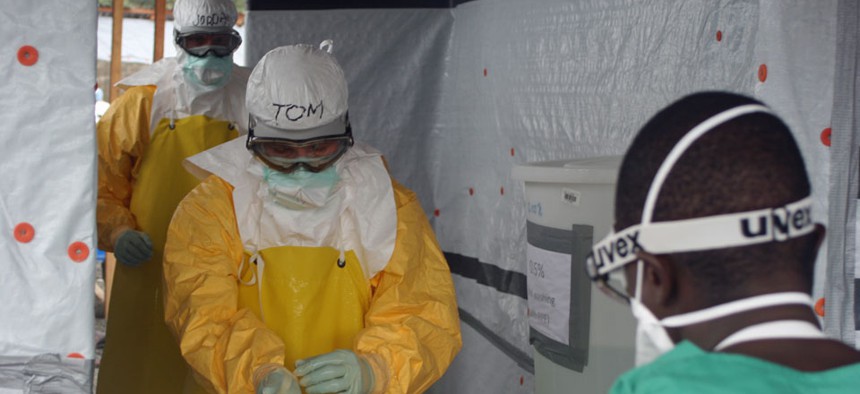
CDC officials don protective equipment when they enter a quarantine unit in Liberia in August. CDC
Photos: How the Government Is Confronting the Ebola Outbreak
USAID, CDC and Defense are among the agencies collaborating to contain the disease's advance.
The U.S. government is mobilizing more personnel to stop the advance of Ebola hemorrhagic fever. With the Centers for Disease Control and Prevention leading the way, the U.S. Agency for International Development and the Defense Department have joined the fray. This week's announcement that CDC will assist Customs and Border Protection in airport screening brings even more agencies into the mix.
Below are photos of agency efforts to control the spread of the virus, both in West Africa and in the United States.
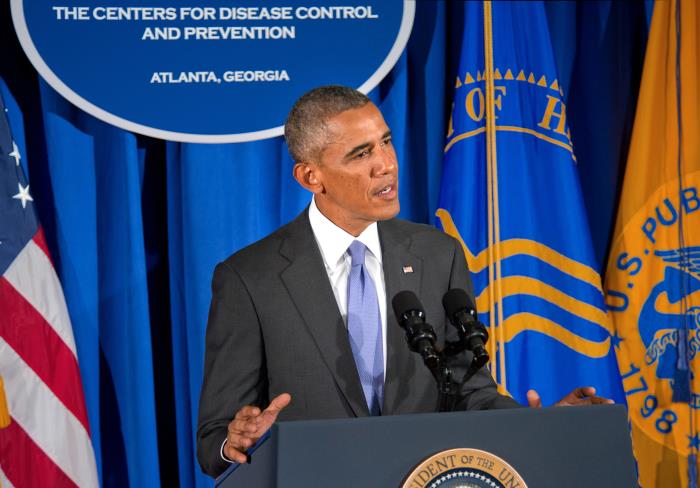
President Obama addressed the press at CDC headquarters Sept. 16. The president presented administration plans and praised international efforts against the disease. (James Gathany/CDC)
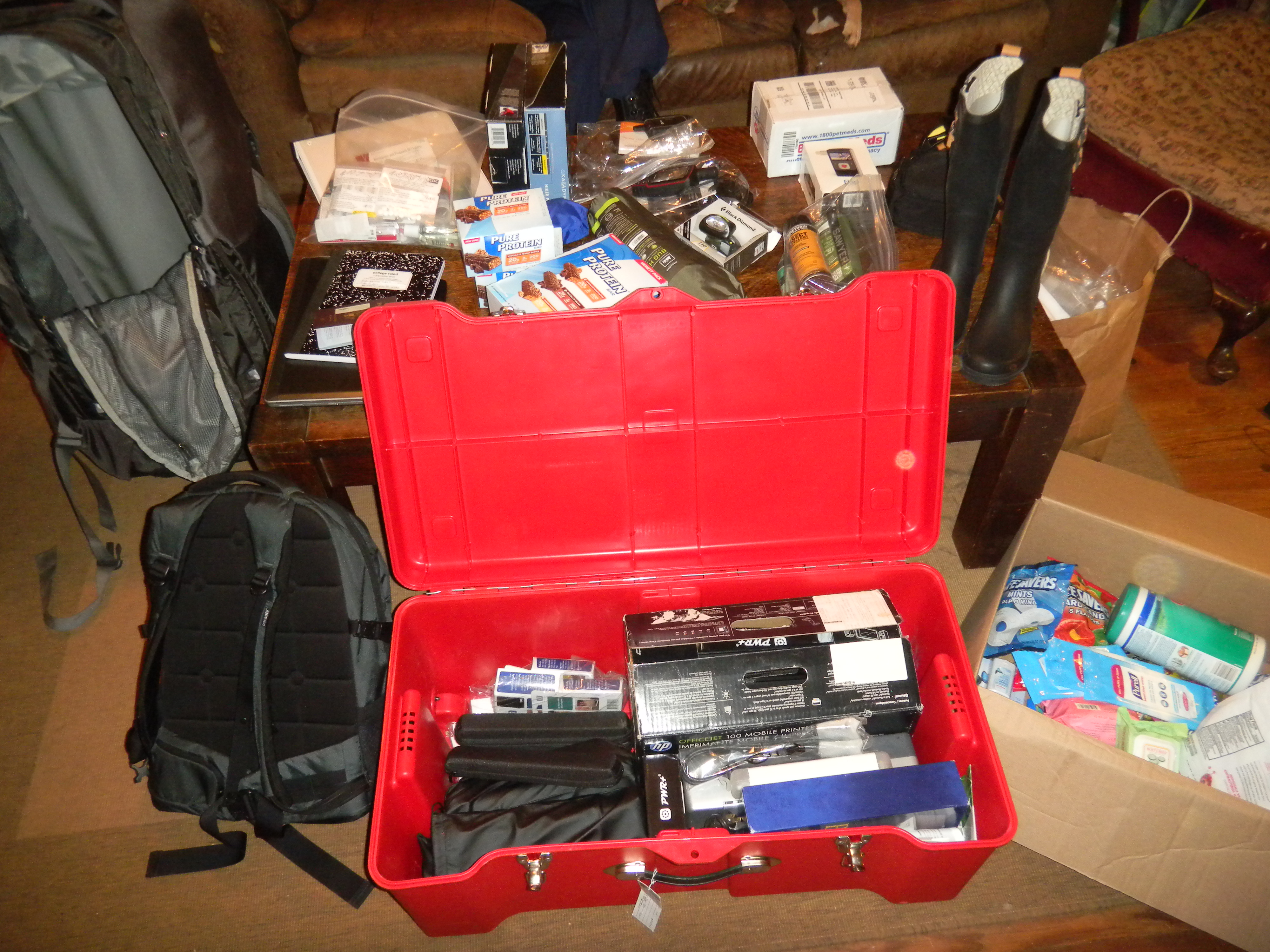
CDC is deploying doctors, scientists and other staff to West Africa to fight the disease. CDC Disease Detective Bex Levine packed protective equipment before deploying to West Africa. (Bex Levine/CDC)
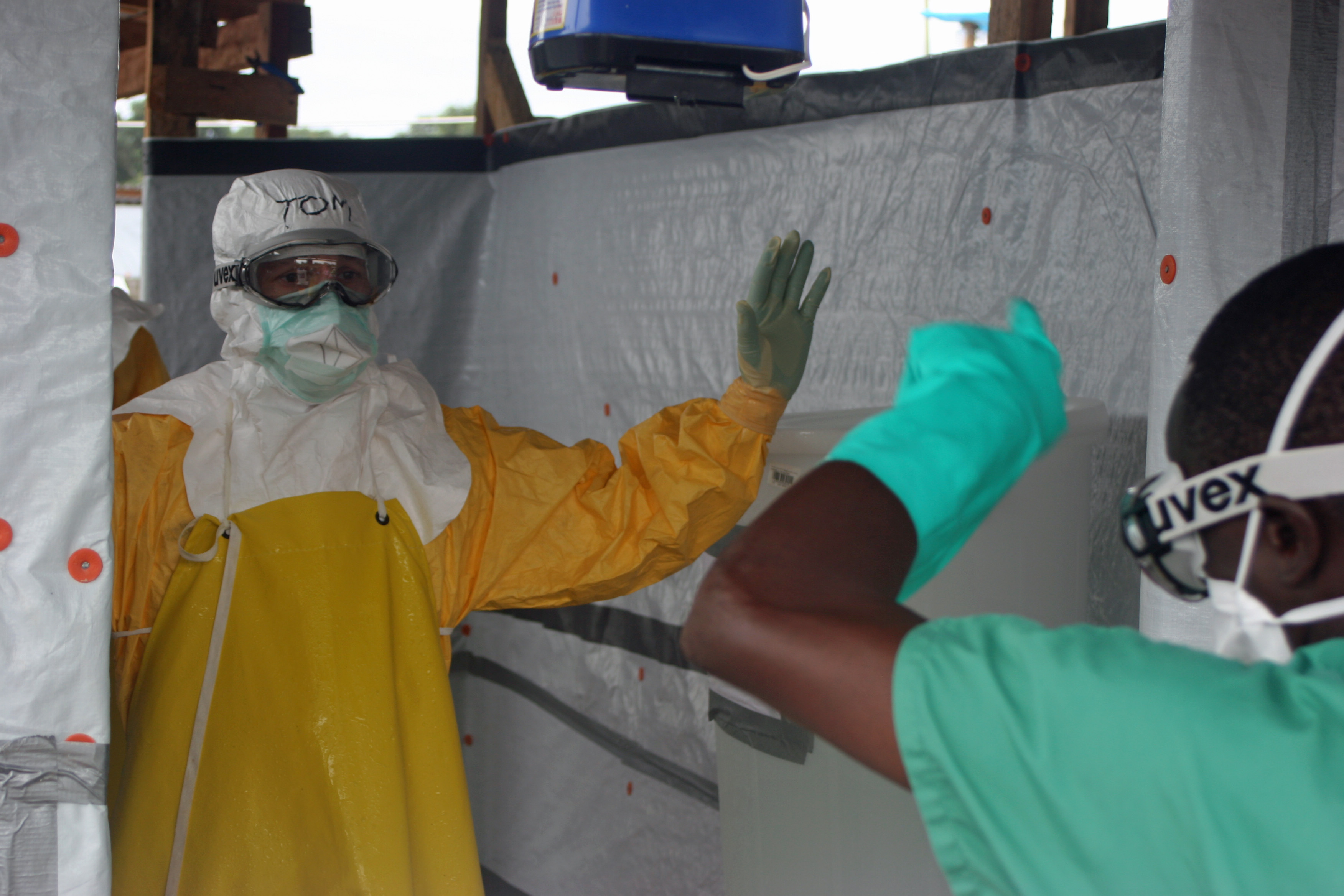
CDC Director Dr. Thomas Frieden visited Doctors Without Borders' Ebola treatment unit in Liberia in late August. Frieden needed to be decontaminated after his leaving the unit. (Athalia Christie/CDC)

Frieden was checked for fever on a thermal scanner as he departed through the Conakry, Guinea airport. (CDC)

CDC staff was instrumental in the construction of a new Ebola isolation ward in Lagos, Nigeria. (CDC)
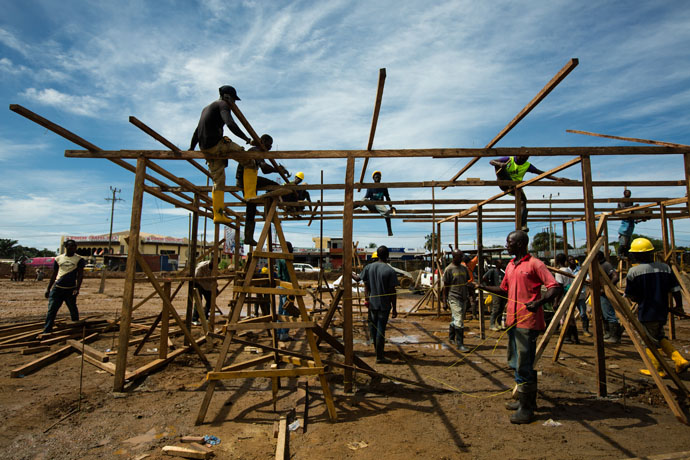
With funding and support from USAID, construction crews work quickly to build a new Ebola Treatment Unit in Monrovia, Liberia. (Morgana Wingard/USAID)
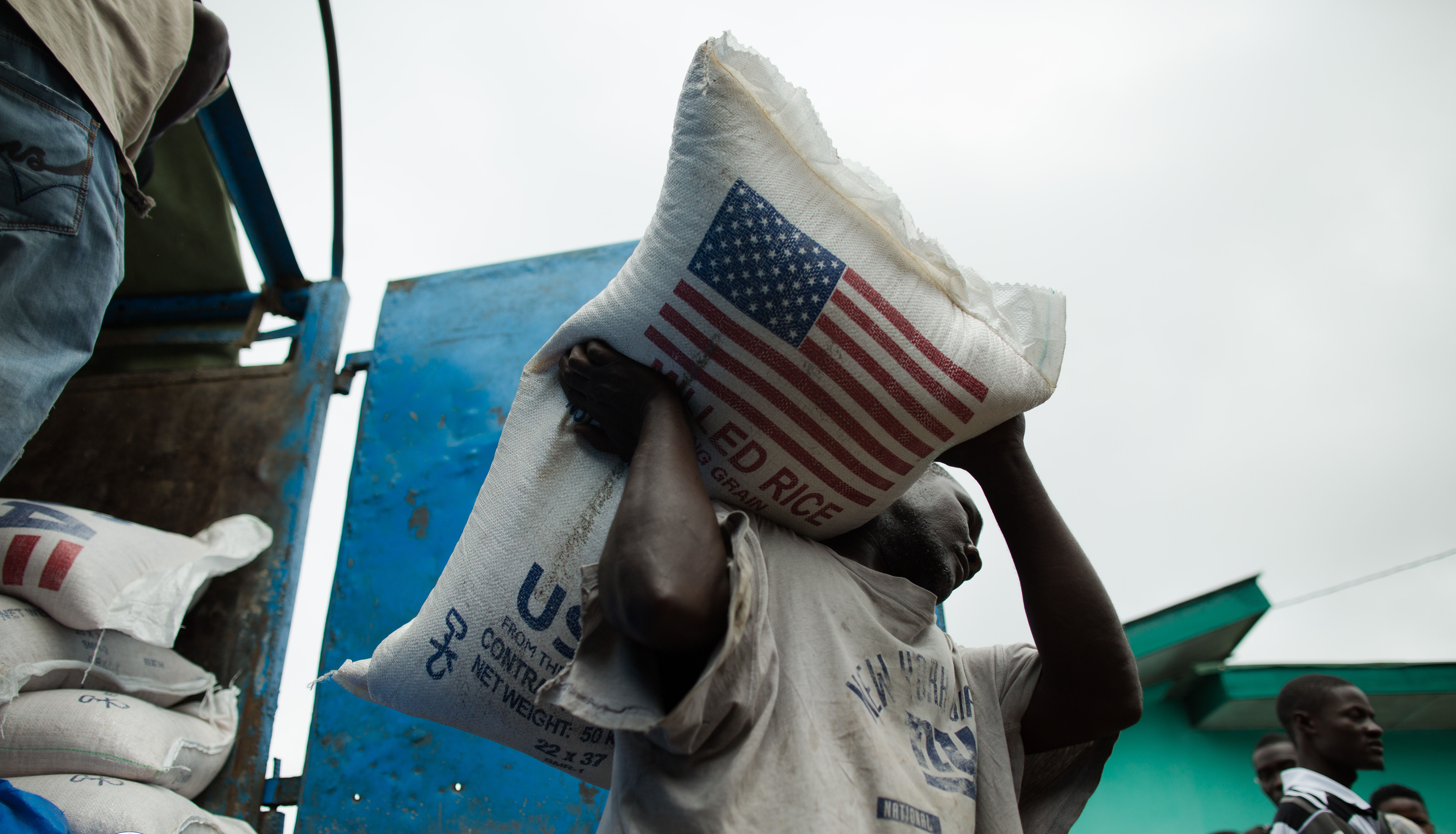
The U.N. World Food Program has been working with local organizations to distribute USAID-donated rice in the West Point neighborhood of Monrovia, Liberia. (Morgana Wingard/USAID)
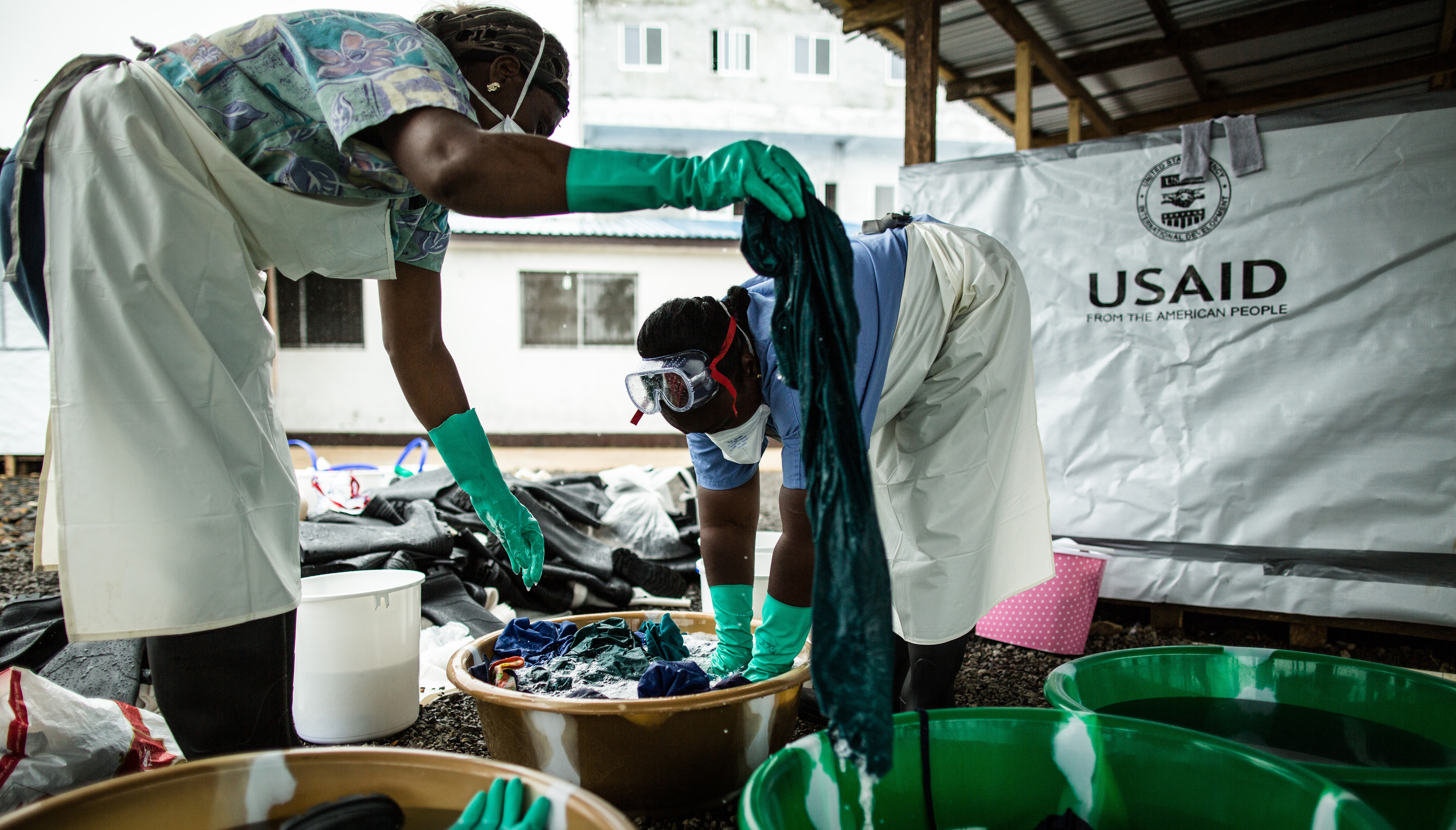
USAID helped set up stations for washing all clothes worn under scrubs in chlorine water, then in soap at the Ebola Treatment Unit at Island Clinic in Monrovia. The washing is instrumental in the fight to stop the disease from spreading to aid workers, medical professionals and others. (Morgana Wingard/USAID)
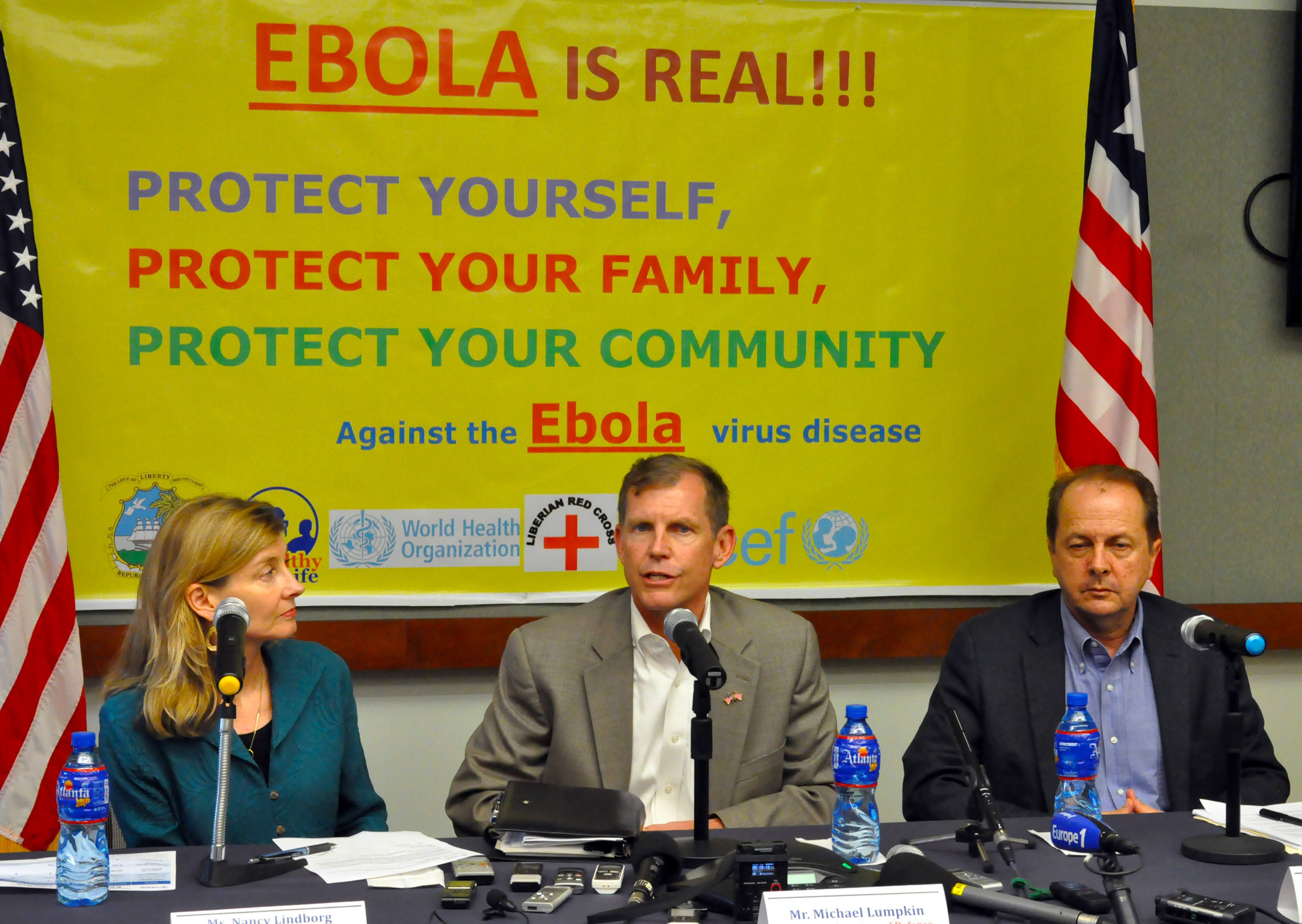
Part of the fight is to explain the risks involved with the disease to people in West Africa. A delegation of American officials held a press conference at the U.S. Embassy in Monrovia, Liberia on Oct. 3. Pictured are Assistant Administrator of the U.S. Agency for International Development Bureau of Democracy, Conflict and Humanitarian Assistance Nancy Lindborg; Assistant Secretary of Defense for Special Operations/Low Intensity Conflict Michael D. Lumpkin; and Director of the Center for Global Health, Centers of Disease Control and Prevention, Dr. Tom Kenyon. (State Department)
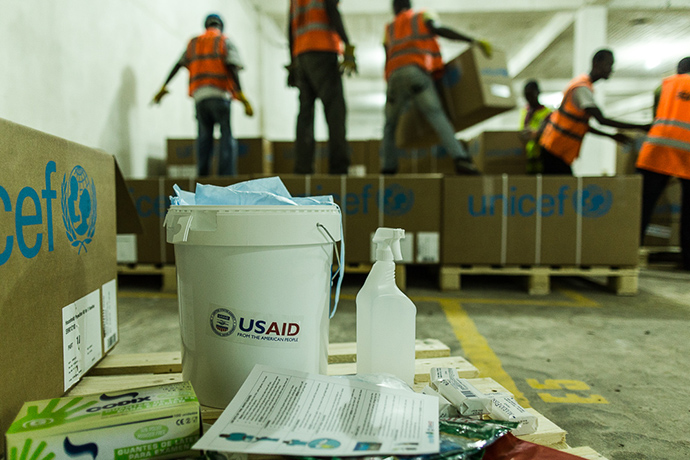
USAID -- along with UNICEF and the Paul G. Allen Family Foundation -- distributed 9,000 community protection kits in Monrovia. The kits include biohazard bags, soap, personal protective equipment and gloves. (Morgana Wingard/USAID)
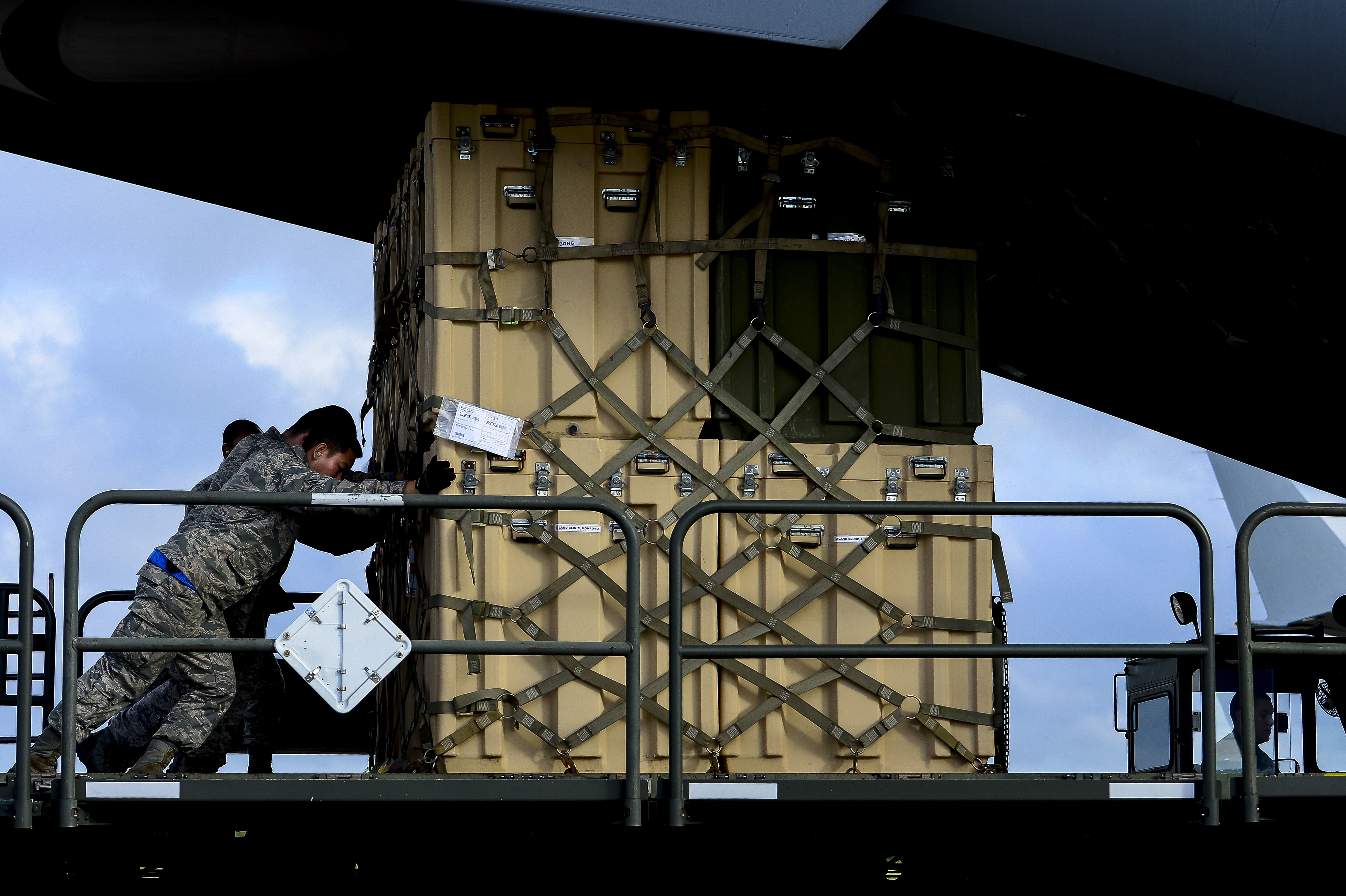
Air Force personnel load cargo onto a C-17 Globemaster at Langley Air Force Base, Va., on Sept. 26. The plane was used to ship a modular and customizable treatment facility as part of Operation United Assistance. (Senior Airman Kayla Newman/Air Force)
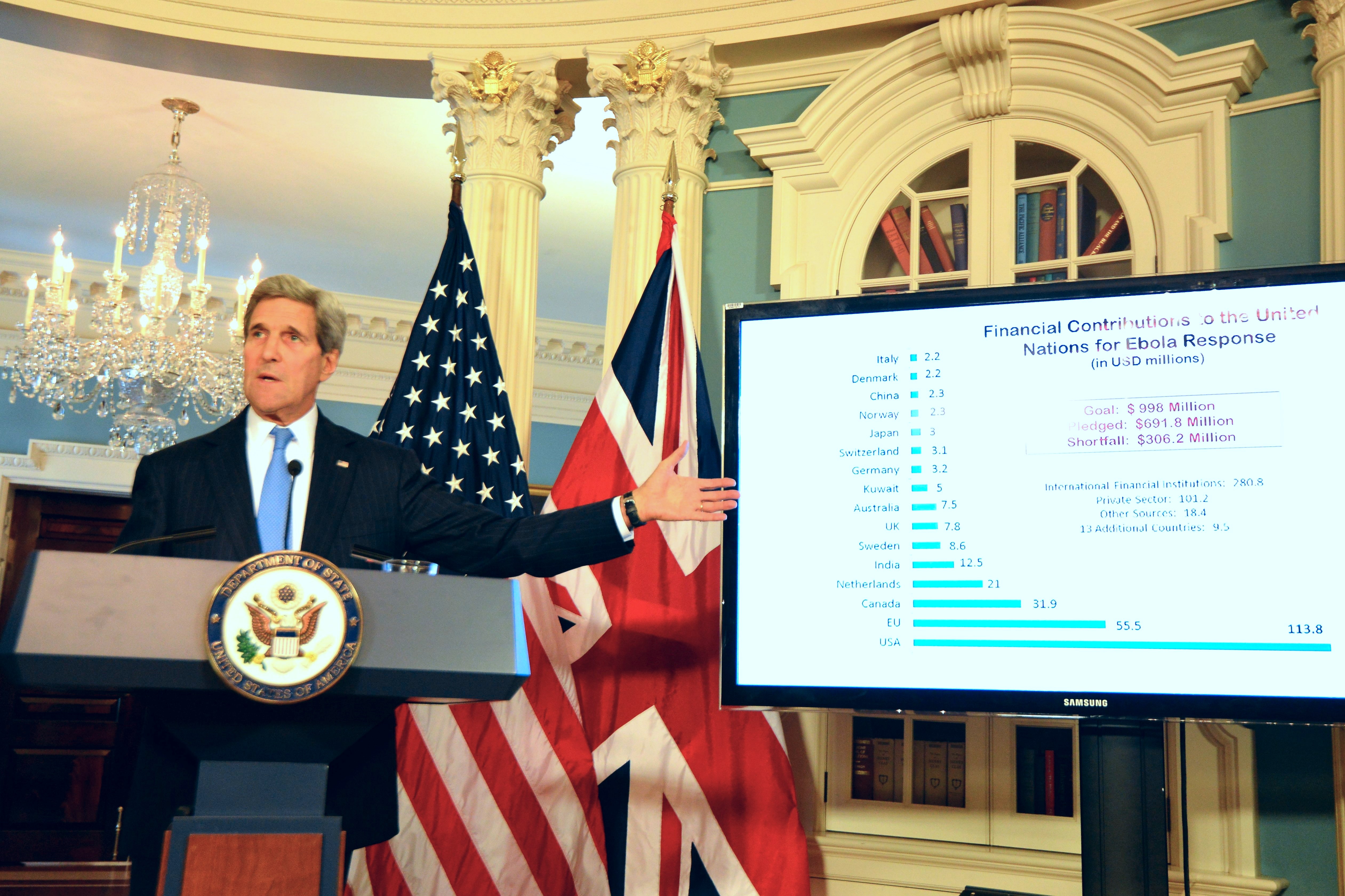
On Oct. 8, Secretary of State John Kerry spoke at a joint press conference with British Foreign Secretary Philip Hammond about the import of the international community's work on Ebola. (State Department)
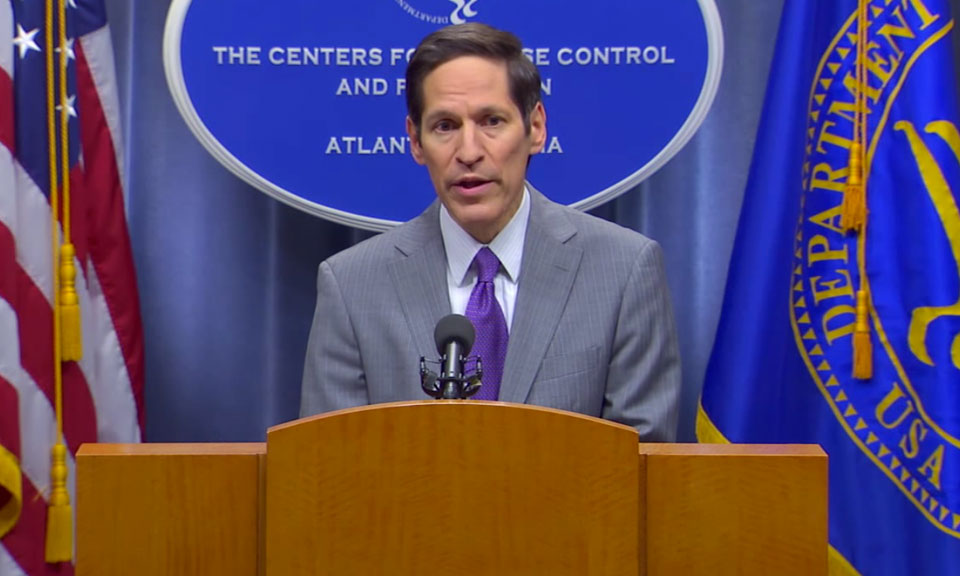
"We are stopping Ebola in its tracks in this country," CDC Director Tom Frieden said last week after a case was confirmed in Texas. "We can do that because of two things: strong infection control that stops the spread of Ebola in health care; and strong core public health functions to trace contacts, track contacts, isolate them if they have any symptoms and stop the chain of transmission. I am certain we will control this." (CDC via YouTube)
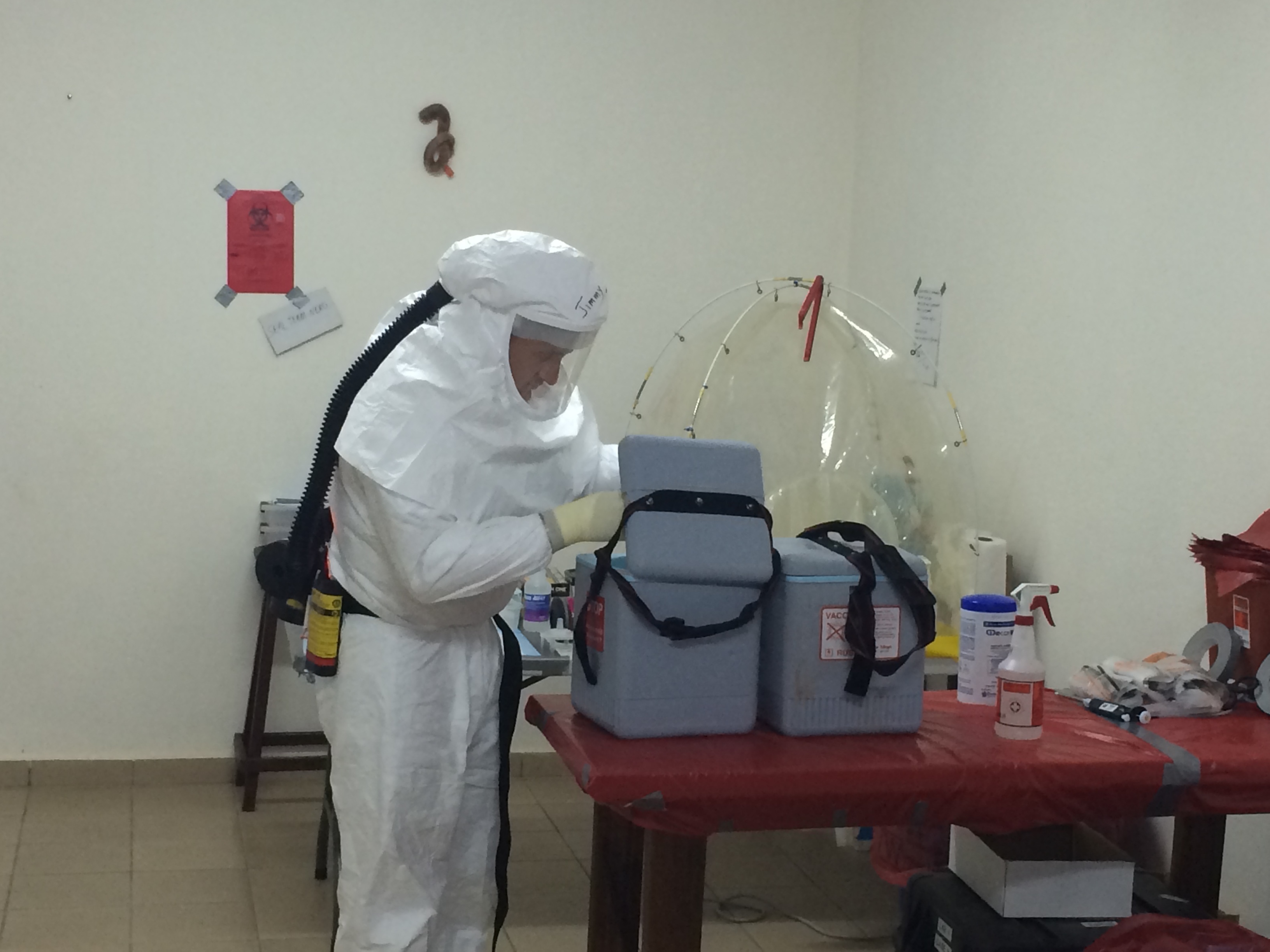
U.S. Navy Lt. James Regeimbal inspects and records samples received at a Naval Medical Research Center mobile laboratory. The lab is part of the Operation United Assistance and Regeimbal is part of a team of "highly-trained" staff with Defense's effort . (Chief Petty Officer Jerrold Diederic/Army)
The Pentagon released a video on its efforts to fight the disease. (Defense Department)
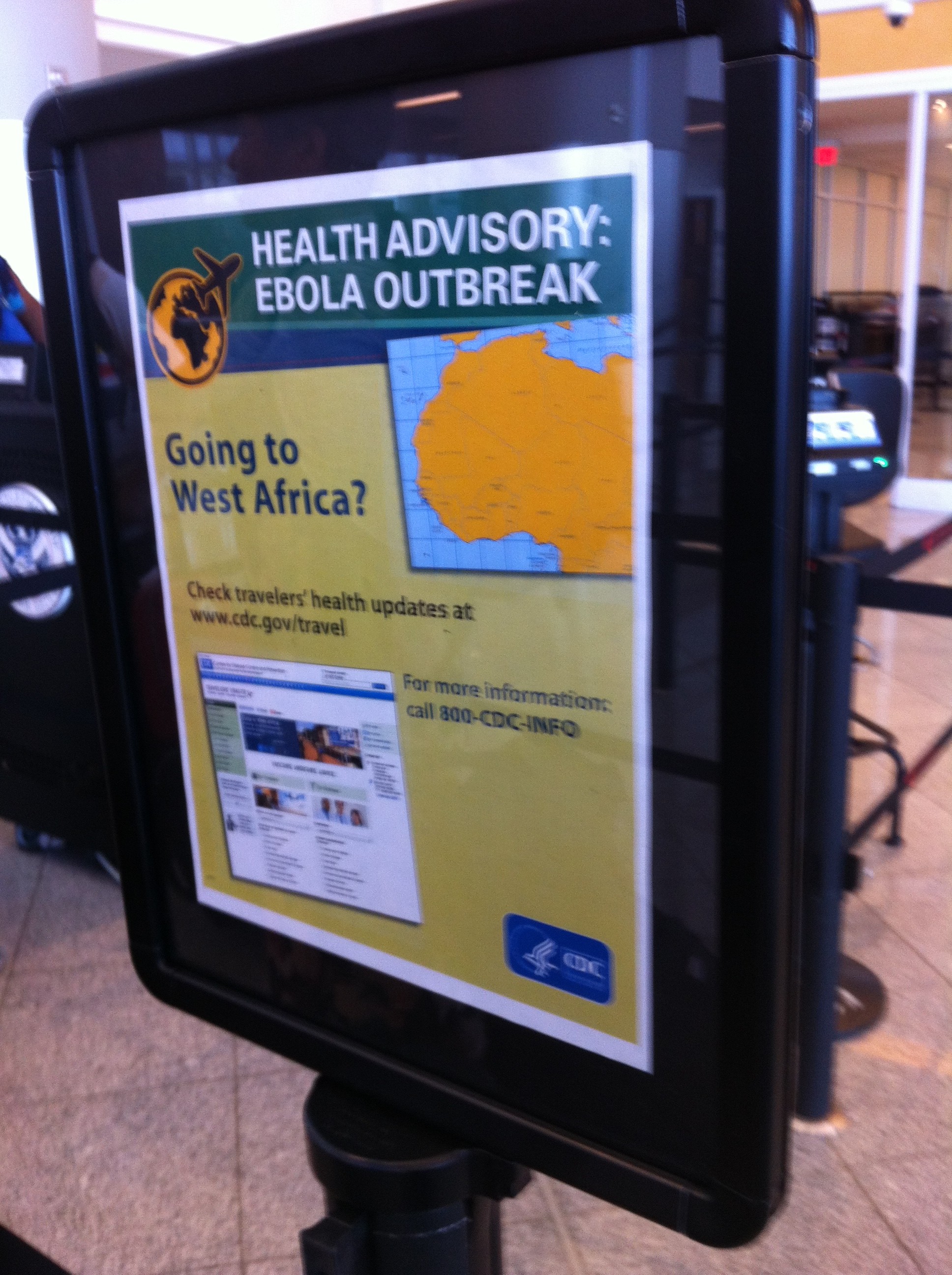
The latest development is more screening and awareness at several U.S. airports . This sign in Atlanta informs passengers of the risk of the disease. (CDC)







